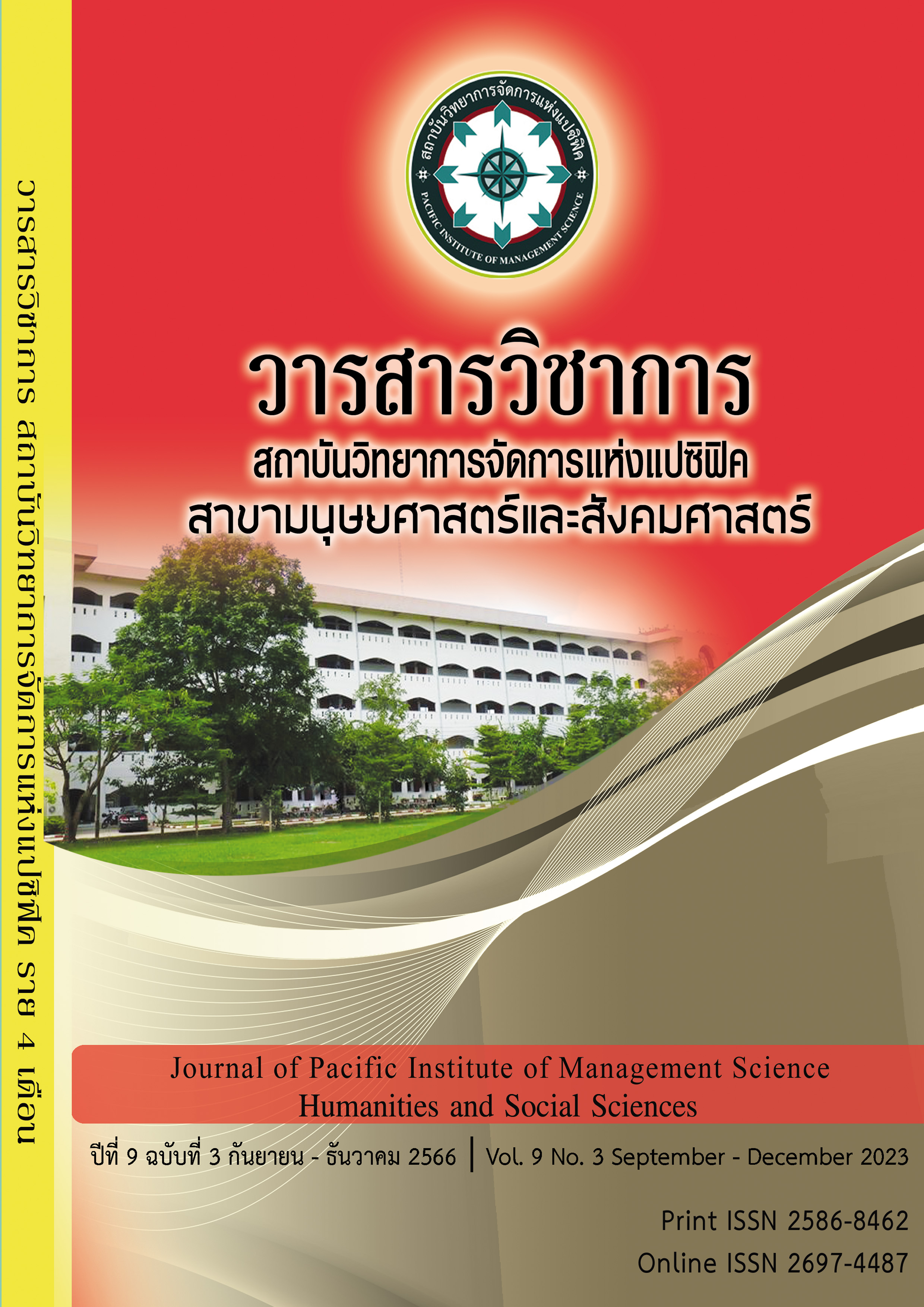Influencing Factors of Perceived Value of Rural Tourism Based on Consumer Characteristic
Keywords:
Rural Tourism, Perceived Value, Tourist Satisfaction, Tourist LoyaltyAbstract
According to the service quality model (SERVQUAL), the framework of this study designs a tourism service quality model based on the perceived value of tourists based on consumer characteristics. This study uses SPSS 24.0 and AMOS 22.0 software to conduct in-depth interviews and questionnaires to explore its impact mechanism. Data were collected from 552 Chinese respondents who had experienced rural tourism in Taiyuan, Shanxi in the past year. The results show that there is a significant relationship between tourist perceived value and tourist satisfaction. The five dimensions of perceived value, namely, landscape value, emotional value, cost value, social value, product and service value, are significantly related to tourist satisfaction. The four dimensions of perceived value, namely, landscape value, emotional value, cost value, and product and service value, are significantly related to tourist loyalty, but not to social value. The analysis shows that tourists' perceived value affects tourists' loyalty and satisfaction to rural tourism destinations. This study can not only guide the further development of rural tourism, but also effectively improve the influence and marketing effect of tourism products.
References
Xu, J. (2016).The service quality of rural tourism in Shandong Province based on tourists' perception. Shandong Normal University, (12), 25-31
Philip, K. & Kevin, L. K. (2012) Marketing Management. 14th Edition. Shanghai: Shanghai People's Publishing House.
Dong, D. H., Quan, X. Y., Qu, X. F. (1999). Customer value and its composition. Dalian University of Technology Journal, (20), 18-19.
Zeithaml V A. (1988). Consumer perception of price, quality and value: a means-end Modell and synthesis of evidence. Marketing Journal. (52)2-21.
Gronroos C. (1996). Relationship marketing: strategic and tactical implications. Management Decision, (34), 5-14.
Woodruff. (1997). Customer value: The next source for competitive advantage. Academy of Marketing Science Journal, (25), 139-153.
Grewal D., Monroe K. B. & Krishnan R. (1998). The Effects of Price-Comparison Advertising on Buyers' Perceptions of Acquisition Value, Transaction Value, and Behavioral Intentions. Marketing Journal, 62(2):46-59.
Bai, C. H. (2001). Western customer value research and its practical implications. Nankai University Management Review, (02), 51-55
Nilsson, P. A. (2022). Staying on farms: An Ideological Background. Annals of Tourism Research, 29, 1-24.
He, J. M. (2003). Review of Foreign Rural Tourism Studies. Tourism Journal, 1, 76-80.
Reichel, A., Lowengart,O. & Milman, A. (2000). Rural tourism in Israel: service quality and orientation. Tourism management, 21, 451-459.
Zheng,L. M., & He, H. J. (2004). Customer Value Analysis Model. Business Research, 4, 100.
Sheth, J. N., Newman, B. I., & Gross,B.L .(1999). Why we buy what we buy: A theory of consumption values. Business Research, 22, 159-170.
Petrick, J. F. (2016). The roles of quality, value, and satisfaction in predicting cruise passengers' behavioral intentions. Travel research, 42, 397-407.
Sánchez, J., Callarisa, L., & Rodríguez, R.M. et al. (2006). Perceived value of the purchase of a tourism product. Tourism Management, 27, 394-409.
Fan, X.C., & Luo, H.C. (2003). Analysis on the Competitiveness of Service Enterprises Based on Customer Perceived Value. Nankai Management Review, 6, 41-45.
Fan, X. Q., & Gan,B. Q. (2004). Customer Perceived Value Matrix. Academic Research, 5, 32-36.
Bai, L. (2007). Empirical Analysis of Customer Perceived Value Dimension in Mobile Phone Market. Business Times, 35, 25-26.
Chen, Y., & Bai, C. G. (2009). Customer Value Driving Factors of High Contact Services. Shanxi Financial News, 31, 51-59.
Duman, T., & Mattila, A. S . (2005). The role of affective factors on perceived cruise vacation value. Tourism Management, 26, 311-323.
Lee, C. K., Lee, Y. K., & Wicks, B. E . (2004) Segmentation of Festival Motivation by Nationality and Satisfaction. Tourism Management, 25, 61-70.
Backman, S. J., & Crompton, J. L . (1991). The usefulness of selected variables for predicting activity loyalty. Leisure Sciences, 3, 205-220.
Backman, S.J., & Veldkamp C.(1995). Examination of the Relationship between service quality and user loyalty. Park and Recreation Administration, 13, 29-41.
Oppermann, M. (2000). Tourism destination loyalty. Travel Research, 39, 78-84.
Pizam, A., Neumann, Y., & Reichel, A . (1978). Dimensions of tourist satisfaction with a destination. Tourism Research, 5, 314-322.
Mathwick C. (2002). Understanding the online consumer: A typology of online relational norms and behavior. Journal of Interactive Marketing, 16(1):40-55.
Bigne, J.E., Saernchez, M.I. & Saernchez, J. (2001). Tourism Image, Evaluation Variables and after Purchase Behavior: Inter-relationship. Tourism Management, 22, 607~616.
Sirohi, S. K., Rai, S. N. (1997). Effect of different levels of lime, moisture and reaction periods on in sacco digestibility and in vitro gas production of paddy straw. Indian J. Dairy Sci., 50 (5): 367-371.
Baloglu, S., McCleary, K.W. (1999). A model of Destination Image Formation. Annals of Tourism Research, 26, 868~897.
Downloads
Published
Issue
Section
License
Copyright (c) 2023 Pacific Institute of Management Science

This work is licensed under a Creative Commons Attribution-NonCommercial-NoDerivatives 4.0 International License.
บทความที่ได้รับการตีพิมพ์เป็นลิขสิทธิ์ของ สถาบันวิทยาการจัดการแห่งแปซิฟิค
ข้อความที่ปรากฏในบทความแต่ละเรื่องในวารสารวิชาการเล่มนี้เป็นความคิดเห็นส่วนตัวของผู้เขียนแต่ละท่านไม่เกี่ยวข้องกับสถาบันวิทยาการจัดการแห่งแปซิฟิค และคณาจารย์ท่านอื่นๆในสถาบันฯ แต่อย่างใด ความรับผิดชอบองค์ประกอบทั้งหมดของบทความแต่ละเรื่องเป็นของผู้เขียนแต่ละท่าน หากมีความผิดพลาดใดๆ ผู้เขียนแต่ละท่านจะรับผิดชอบบทความของตนเองแต่ผู้เดียว







